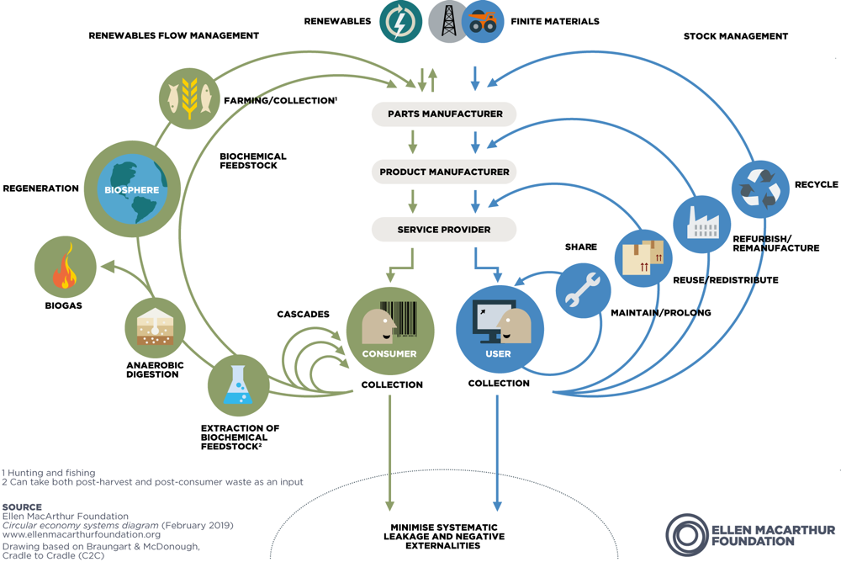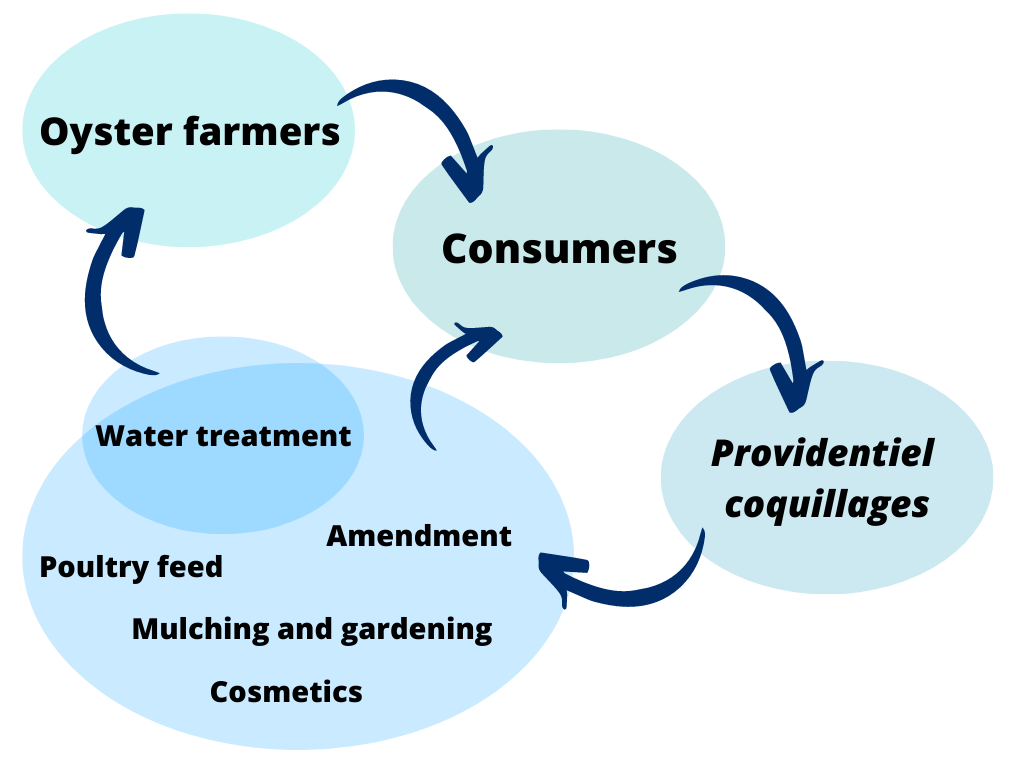At a time when natural resources are dwindling, inequalities are more and more present, and climate change is impacting on environmental change, the circular economy is emerging as an important piece of the global work puzzle to address these issues. To better understand this system and its sustainability, this article illustrates it through the revaluation of oyster shells, and the opportunities created by its implementation.
Inspired by the workings of nature, a circular economy is a systemic approach to economic development designed to benefit businesses, society, and the environment (Ellen MacArthur Foundation, 2021). The circular economy aims at a paradigm shift from the linear economy, limiting resource waste and environmental impact, and increasing efficiency at all stages of the product and service economy. It can be based on three major areas of action: production and supply of goods and services, consumption (demand and behaviour) and waste management (Agency for Ecological Transition, 2021), at different scales. The diagram below illustrates the way it works:

At a local scale, a French company is recovering and transforming shellfish bio-waste into new products. Oyster shells have many trace elements which are positive in several areas. Until now, the shells from the Bassin de Thau (12,000 tons per year), were incinerated or went to the quarry as fill. Bulky, they have an ecological cost as well as a cost for oyster farmers and communities. This French society, Providentiel coquillages decided to change the way they are used thanks to the integration of the circular economy into their operations, as illustrated in the figure bellow. In addition to creating employment on the territory and creating a market for bio-fertilizers, the benefits are numerous:
– In agriculture as an amendment: The shells neutralise the acidity of the soil. Limestone soil improvers also improve the structure of the soil, making it more permeable and easier to work. Finally, they provide calcium, a fertilising element necessary for plant nutrition.
– In poultry feed: In addition to providing calcium, oyster shells help the hen to assimilate the phosphorus it needs.
– In gardening: Oyster shells are a natural mineral mulch. It prevents the growth of weeds, protects against frost and heat and limits evaporation by keeping the soil moist and cool. They are therefore used to make planters, copings and borders.
– In water treatment: By acting as a filter, oyster shells ensure a stable level of pH values in the water.
– In cosmetics: Mother-of-pearl is highly valued for its applications in cosmetics and nail polish. (Providentiel coquillages, 2021)

The company works in direct partnership with farmers, winegrowers, poultry farmers, communities, landscapers etc. These partners thus have less need to produce raw materials and use fewer resources. A real network is then created, making possible to contribute to the change of way of thinking and the injection of the functioning of the circular economy to other fields and on a larger scale (Providentiel Coquillages, 2021).
The circular economy approach by valuing food losses and wastage is just an entry point for rethinking the principles of today’s economy. From pasta to oyster shells, there are still many other areas where work is possible. On different scales and at different levels, the aim is to work together to preserve and develop natural capital, optimise the exploitation of resources and create the conditions for the development of a sustainable virtuous system.
REFERENCES
ADEME. (2020). Circular Economy. https://ademe.fr
Ellen MacArthur Foundation. (2021). How to build a circular economy. Ellen MacArthur Foundation
Providentiel Coquillages. (2021). https://providentiel-coquillages.com

